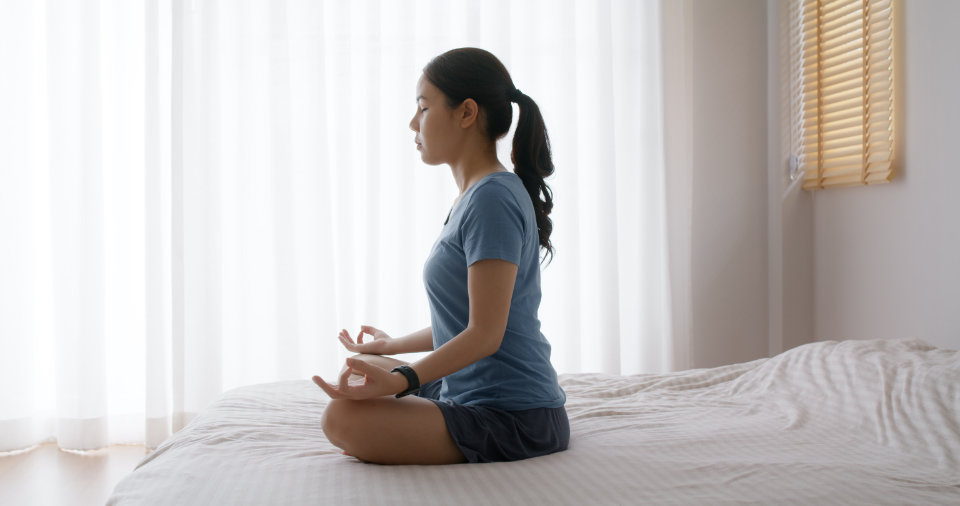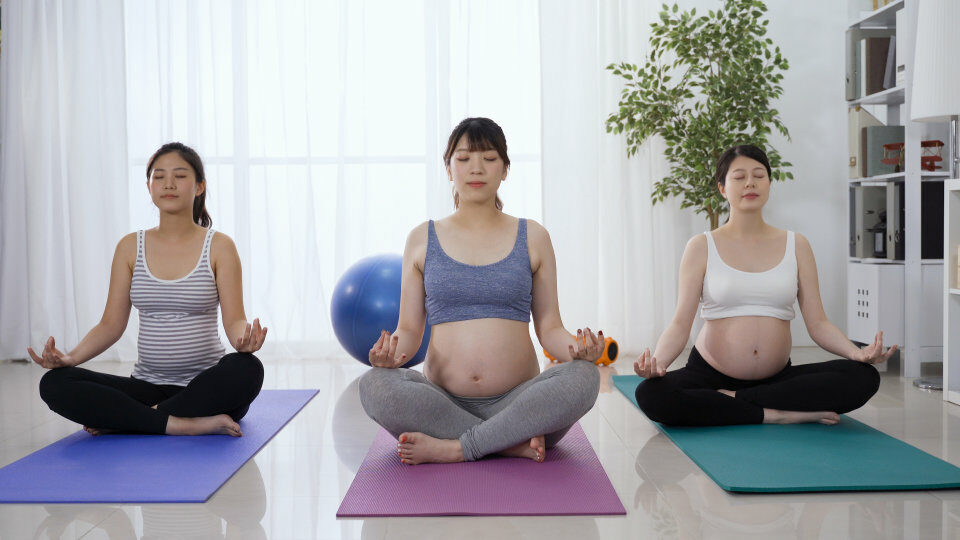Meditation is a practice that has been around for thousands of years, and it has recently gained popularity in Western cultures. It is a technique that can help you achieve a state of calm and relaxation while improving your overall health and well-being.
In this article, we will provide a comprehensive guide to meditation for beginners. We will cover everything from the different types of meditation and their benefits to the practical aspects of starting a meditation practice.
Table of Contents
What is Meditation?
Meditation is a mental practice that involves focusing your attention on a particular object, thought, or activity. It can be done in many different ways and can help you achieve a state of calm and relaxation.
Meditation has been shown to have numerous health benefits, including reducing stress and anxiety, improving sleep, and lowering blood pressure.
If every 8-year-old in the world is taught meditation, we will eliminate violence from the world within one generation.
Dalai Lama XIV
Understanding Meditation for Beginners
There are many different types of meditation, each with its own unique benefits. Some of the most popular types of meditation include:
- Mindfulness Meditation
- Loving-Kindness Meditation
- Transcendental Meditation
- Body Scan Meditation
- Walking Meditation
Meditation works by altering your brain waves, which can help reduce stress and anxiety, improve focus and concentration, and promote relaxation.
As mindfulness expert Jon Kabat-Zinn says, ‘Mindfulness means paying attention in a particular way: on purpose, in the present moment, and nonjudgmentally.’
Kabat-Zinn’s work has been instrumental in bringing mindfulness to the mainstream and showing its benefits for physical and mental health.”
Getting Started with Meditation for Beginners
If you’re new to meditation, it’s important to start slowly and gradually build up your practice. Here are some tips to help you get started:
- Assess your needs and goals – Before you start meditating, think about why you want to meditate and what you hope to achieve. This can help you choose the right type of meditation and set realistic goals.
- Choose a comfortable and quiet space – Find a quiet place where you can sit or lie down comfortably without being disturbed. It’s important to have a space that is free from distractions and interruptions.
- Choose the right time of day – Find a time of day when you’re most alert and awake. Some people prefer to meditate in the morning, while others find it helpful to meditate in the evening to help them unwind after a long day.
- Start with short sessions and gradually increase duration – It’s best to start with short meditation sessions of five to ten minutes and gradually increase the duration as you become more comfortable.
In the words of meditation teacher Sharon Salzberg, ‘Mindfulness isn’t difficult, we just need to remember to do it.’
Salzberg’s teachings emphasize the importance of being present in the moment and cultivating a sense of compassion for ourselves and others.

Meditation Techniques
There are many different meditation techniques to choose from, each with its own unique benefits. Here are some of the most popular meditation techniques:
- Mindfulness Meditation – This involves focusing your attention on the present moment and observing your thoughts and feelings without judgment. Mindfulness meditation can help reduce stress and anxiety, improve focus and concentration, and promote relaxation.
- Loving-Kindness Meditation – This involves cultivating feelings of compassion and love for yourself and others. Loving-kindness meditation can help improve relationships, boost mood, and reduce stress and anxiety.
- Transcendental Meditation – This involves using a mantra or sound to help focus your attention and achieve a state of relaxation. Transcendental meditation can help reduce stress and anxiety, improve focus and concentration, and promote relaxation.
- Body Scan Meditation – This involves focusing your attention on different parts of your body and observing any sensations or feelings that arise. Body scan meditation can help reduce tension and promote relaxation.
- Walking Meditation – This involves walking slowly and mindfully, focusing your attention on your steps and the sensations in your body as you walk. You can do this indoors or outdoors, but it’s important to find a quiet and peaceful place where you won’t be disturbed.
Creating a Meditation Practice
Now that you have an understanding of different meditation techniques, it’s time to start creating your own practice. Here are some tips to help you get started:
- Developing a routine: Consistency is key when it comes to meditation. Find a time of day that works for you and commit to practicing at the same time each day. This will help you build a habit and make meditation a regular part of your daily routine.
- Overcoming common obstacles: It’s natural to encounter some obstacles when starting a new practice. Common obstacles include finding the time to meditate, feeling restless or distracted during meditation, and struggling to maintain focus. To overcome these obstacles, start with short sessions and gradually increase the duration. You can also try guided meditations or group meditation classes to help you stay motivated and focused.
- Keeping yourself motivated: It’s important to stay motivated and committed to your meditation practice. To do this, remind yourself of the benefits of meditation and set achievable goals for yourself. You can also try tracking your progress and rewarding yourself for meeting your goals.
- Incorporating meditation into your daily life: Meditation doesn’t have to be limited to a specific time or place. You can practice mindfulness throughout your day by bringing your attention to your breath or surroundings during daily activities like eating, working, or exercising.
The Benefits of Meditation
Meditation has numerous benefits for both the mind and body. Here are just a few of the ways meditation can improve your overall health and well-being:
- Physical benefits: Meditation has been shown to reduce stress, lower blood pressure, improve sleep, and boost the immune system. It can also help alleviate chronic pain and improve digestion.
- Mental benefits: Meditation can help reduce anxiety and depression, improve focus and concentration, and enhance emotional regulation. It can also help increase self-awareness and promote feelings of calm and inner peace.
- Spiritual benefits: Meditation can help you develop a greater sense of purpose and meaning in life. It can also help you connect with your intuition and inner wisdom, and deepen your connection to the world around you.

Mindfulness in Daily Life
One of the most powerful aspects of meditation is its ability to help you stay present and mindful in your daily life. Here are some tips for incorporating mindfulness into your everyday activities:
- Bringing mindfulness into everyday activities: You can practice mindfulness during daily activities like eating, working, or exercising by simply bringing your attention to your breath or surroundings. This can help you stay present and focused, and reduce stress and anxiety.
- Using mindfulness to manage stress and anxiety: When you feel stressed or anxious, take a few deep breaths and bring your attention to your breath. This can help you calm your mind and reduce feelings of stress and anxiety.
- Maintaining mindfulness in relationships: Mindfulness can also help improve your relationships with others. By staying present and attentive during conversations, you can deepen your connection with others and improve the quality of your interactions.
Meditation for Athletes
Meditation can also be a valuable tool for athletes to enhance their performance and improve their mental and emotional well-being. Here are some ways that meditation can benefit athletes:
- Stress Reduction: Athletes often experience high levels of stress due to the pressure to perform, injuries, and other factors. Meditation can help reduce stress and anxiety, which can improve overall performance and well-being.
- Improved Focus: Meditation can help athletes improve their focus and concentration, which is essential for success in sports. By learning to quiet the mind and stay present in the moment, athletes can improve their ability to focus on the task at hand.
- Better Recovery: Meditation can help athletes recover from injuries and workouts more quickly by reducing inflammation and stress on the body. This can help them get back to training and competing more quickly.
- Mental Toughness: Meditation can help athletes develop mental toughness, which is essential for success in sports. By learning to stay calm under pressure and maintain focus in challenging situations, athletes can perform at their best even when the stakes are high.
If you’re an athlete interested in trying meditation, consider starting with a guided meditation for athletes or incorporating a short meditation practice into your pre-game or pre-workout routine. Remember to listen to your body and adjust your practice as needed to meet your specific needs and goals.
Meditation for Pregnant Mums
Meditation can be especially beneficial for pregnant women, as it can help reduce stress and anxiety, improve sleep, and promote relaxation. Pregnancy can be a time of significant physical and emotional changes, and meditation can provide a much-needed sense of calm and grounding.
One of the most important benefits of meditation for pregnant women is stress reduction. Research has shown that high levels of stress during pregnancy can have negative effects on both the mother and the baby, including an increased risk of preterm labor, low birth weight, and developmental delays. Meditation can help reduce stress by promoting relaxation and reducing the body’s stress response.
Another benefit of meditation for pregnant women is improved sleep. Many pregnant women struggle with sleep disruptions, which can lead to fatigue and other negative effects. Meditation can help promote relaxation and improve sleep quality, which can help reduce these negative effects.
There are many different types of meditation that can be beneficial for pregnant women. Mindfulness meditation, loving-kindness meditation, and body scan meditation are all great options. It’s important to choose a meditation practice that feels comfortable and safe for you and your baby.
If you’re new to meditation, start with short sessions and gradually work your way up to longer periods of time. You may also want to consider taking a prenatal yoga class, which often includes meditation and other relaxation techniques.
As always, it’s important to talk to your healthcare provider before starting any new exercise or relaxation routine during pregnancy. With their guidance and support, you can safely incorporate meditation into your prenatal care routine and experience the many benefits it has to offer.

Common Misconceptions about Meditation
While meditation has become more popular and mainstream, there are still some misconceptions that people have about it. Here are a few common misconceptions, along with the truth about each one:
1. Meditation is a religion.
Many people associate meditation with certain religions, such as Buddhism or Hinduism. While meditation is often practiced in these religions, it is not a religion in itself. Meditation is simply a practice that can be used by people of any religion or no religion at all.
2. You have to clear your mind completely.
One of the most common misconceptions about meditation is that you have to completely clear your mind of all thoughts in order to meditate successfully. However, this is not the case. While meditation does involve focusing your mind on a specific object or idea, it is not about completely emptying your mind of thoughts. Instead, it’s about acknowledging your thoughts and then letting them go.
3. You need special equipment or training.
Another misconception about meditation is that you need special equipment or training in order to do it. However, all you really need to meditate is a quiet space and a few minutes of your time. There are many free guided meditations available online that can help you get started if you’re not sure where to begin.
4. Meditation has no potential side effects.
While meditation is generally considered to be safe for most people, there are some potential side effects to be aware of. For example, some people may experience feelings of discomfort, anxiety, or even panic during meditation. It’s also possible to experience physical side effects, such as headaches or muscle pain. However, these side effects are usually mild and go away on their own.
5. You can’t do it wrong.
While there is no “right” or “wrong” way to meditate, there are certain techniques that are more effective than others. For example, some people may find that focusing on their breath is more helpful than focusing on a specific image or phrase. It’s important to find a technique that works for you and to be open to trying different approaches.
6. Meditation is the same thing as yoga
While meditation is often practiced as part of yoga, it’s important to recognize that they are not the same thing. Yoga typically involves physical postures and movement, while meditation involves stillness and focus. While there may be some overlap, it’s important to understand that meditation can be practiced independently of yoga, and vice versa.
Tips for Beginners
If you’re new to meditation, it can be helpful to follow these tips to get started:
1. Start with guided meditations.
If you’re not sure where to begin, try following a guided meditation. There are many free guided meditations available online, and they can help you get a feel for what meditation is all about.
2. Don’t judge your experience.
It’s common to feel like you’re “doing it wrong” when you first start meditating. However, it’s important to remember that there is no right or wrong way to meditate. Don’t judge your experience, just allow yourself to be present in the moment.
3. Practice regularly but don’t force it.
In order to experience the benefits of meditation, it’s important to practice regularly. However, don’t force yourself to meditate if you’re not in the right headspace. If you’re feeling stressed or anxious, it may be better to take a break and come back to meditation when you’re feeling more relaxed.
4. Be kind to yourself.
Remember that meditation is a practice, and like any practice, it takes time and patience to get better. Don’t be too hard on yourself if you’re not seeing immediate results. Just keep practicing and be kind to yourself along the way.
Get Started with Meditation
Meditation is a powerful tool that can help you reduce stress, improve focus, and enhance your overall well-being. By making a commitment to a regular practice, you’ll be able to experience these benefits firsthand.
Remember, there’s no right or wrong way to meditate, and it’s important to find a practice that works for you. Whether you prefer a guided meditation or a silent practice, the key is to make it a regular part of your routine.
If you’re new to meditation, start with short sessions and gradually work your way up to longer periods of time. And don’t worry if your mind wanders or if you feel like you’re not doing it right – that’s all part of the process. With time and practice, you’ll be able to cultivate a deeper sense of calm and clarity that will serve you well in all areas of your life.
Incorporating mindfulness into your daily routine can also be a powerful way to cultivate a greater sense of awareness and presence in your life. By focusing on the present moment and paying attention to your thoughts and emotions, you can start to develop a more meaningful and fulfilling life.
Remember, the benefits of meditation and mindfulness are available to everyone, regardless of age, gender, or background. So why not start today? With a little patience and dedication, you can experience the transformative power of these practices and take your health and well-being to the next level.
What is meditation, and why should I do it?
Meditation is a practice that involves training your mind to focus on the present moment, while letting go of distracting thoughts and emotions. It can help reduce stress, improve focus, and increase feelings of calm and relaxation.
How do I get started with meditation?
To get started with meditation, find a quiet and comfortable place to sit or lie down, set a timer for 5-10 minutes, and focus on your breath. You can also try guided meditations or classes to help you get started.
What are the different types of meditation?
There are many different types of meditation, including mindfulness meditation, loving-kindness meditation, transcendental meditation, body scan meditation, and walking meditation. Each type has its own benefits and techniques.
Can meditation help with anxiety and stress?
Yes, many studies have shown that meditation can help reduce anxiety and stress, as well as improve symptoms of depression and other mental health conditions.
How often should I meditate?
It’s recommended to meditate for at least 10-15 minutes per day, but you can start with shorter sessions and gradually increase your time. Consistency is key, so try to meditate at the same time each day.
Do I need any special equipment or training to meditate?
No, you don’t need any special equipment or training to meditate. All you need is a quiet and comfortable place to sit or lie down, and a willingness to focus on your breath and be present in the moment. You can also try guided meditations or classes if you’re new to meditation.
What is the best time of day to meditate?
The best time to meditate is whenever you can do it consistently. Many people find that meditating first thing in the morning works well because it helps set the tone for the day, but others prefer to meditate in the evening to wind down before bed. Experiment with different times of day and see what works best for you.
Can you meditate if you have a busy mind?
Absolutely! Having a busy mind is a normal part of the meditation process, and it’s something that most people experience. The goal of meditation is not to completely clear your mind, but rather to observe your thoughts and let them pass without getting caught up in them.
What should you do if you fall asleep while meditating?
If you find yourself falling asleep while meditating, it’s a sign that you’re probably not getting enough sleep at night. Try meditating at a different time of day or experiment with different postures to help you stay awake. And don’t be too hard on yourself – falling asleep during meditation is a common experience, especially for beginners.





